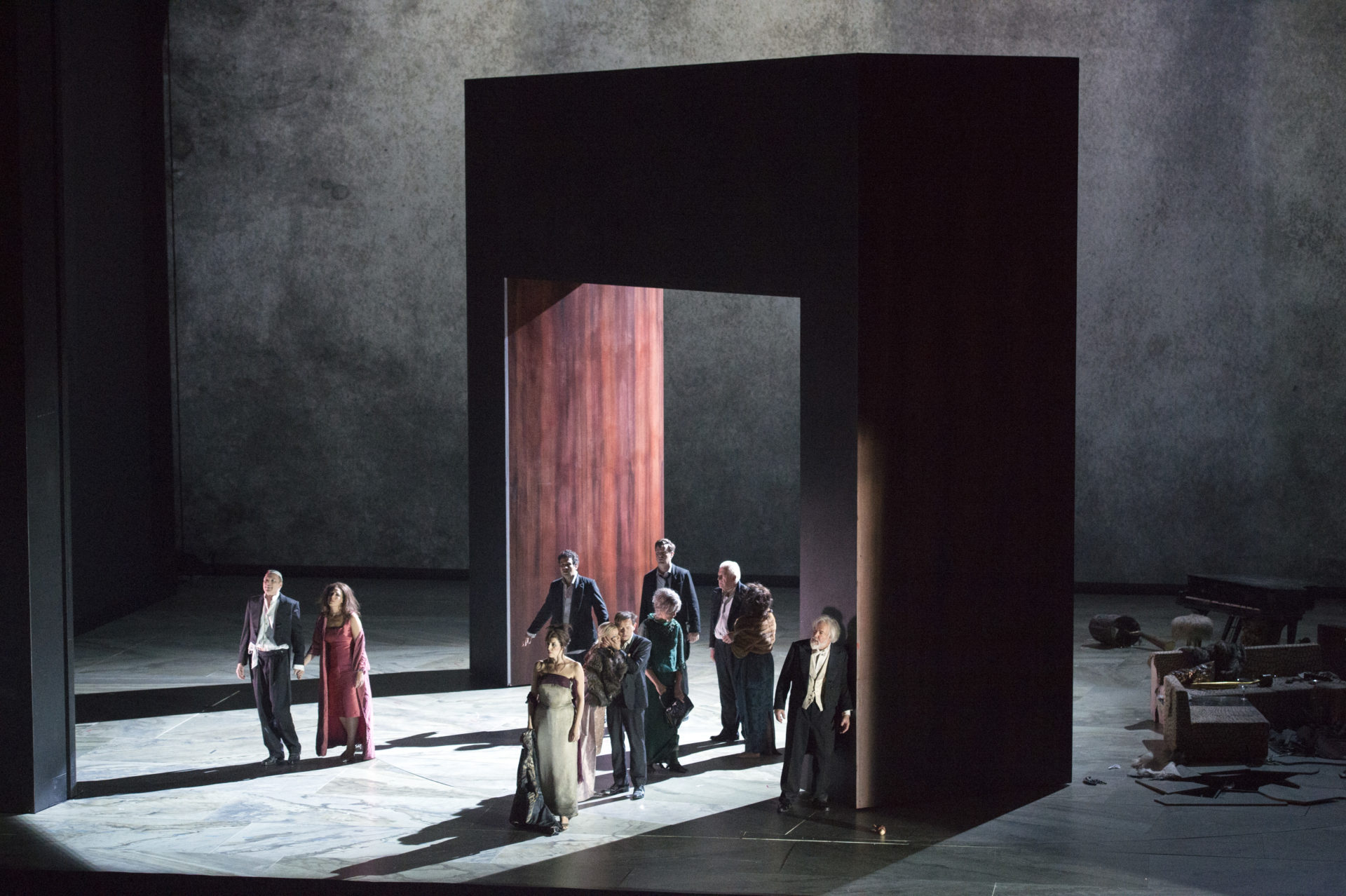Adès: Exterminating Angel Symphony at the Proms - Programme Note

Thomas Adès's Exterminating Angel Symphony, a four-movement work based on material from his opera, The Exterminating Angel, is to be premiered at the 2021 BBC Proms by the City of Birmingham Symphony Orchestra and Music Director Mirga Gražinytė-Tyla on 5 August. The concert is to be broadcast live on BBC4 and BBC Radio 3, and will be available on BBC Sounds until 11 October 2021.
In my programme note for the concert, I described how Adès reworked the opera for a concert piece, and in particular, why the material should be considered as symphonic rather than a suite:
Thomas Adès – The Exterminating Angel Symphony (2020)
- Entrances
- March
- Berceuse
- Waltzes
Based closely on Luis Buñuel’s classic 1962 film, Thomas Adès’s third opera, The Exterminating Angel (2015–16), depicts a group of bourgeois socialites seemingly unable to leave the drawing room after attending a dinner party. Unlike the film, in which there is virtually no musical presence, Adès uses the orchestra to give voice to ‘an underground river of meaning’ that underpins the (in)action on stage. Central to this is the musical representation of the titular exterminating angel, understood by Adès as ‘an absence of will, of purpose, of action’.
The Symphony, derived from material of the opera, captures the many musical characteristics of the eponymous angel. The sometimes uncanny, often sonorous, surface of the music presents the alternately threatening and seductive aspects of the angel and its musical pushes and pulls towards inaction. Significantly, the music is constructed from a tightly organised set of intervals that give the angel its identity. It is this latter symphonic quality of the opera that contributes to the music extracted from it being a symphony rather than a suite.
The first movement, ‘Entrances’ reproduces the rhythmically lop-sided chaconne that accompanies the guests’ arrival at the party. The guests’ introductions to one another float above the chaconne’s repetitions, and an important melodic idea of a rising sixth followed by a descent, setting the greeting ‘enchanted’ is given first in the Symphony to solo horns. The music builds to a climax and fades away, only to repeat in an out-of-kilter version that accompanies a second, surreal entrance procession. Under the influence of the angel, audible in the unstable orchestration and dislocation of material in this altered reprise, the guests have become enchanted (or entranced).
The second movement is a ferocious march, characterised by an insistent, repetitive rhythm hammered out in the percussion. This was inspired by ritual drumming of Calanda (captured in a documentary by Buñuel); above it, the melodic line recalls the ‘enchanted’ figure. If this represents the exterminating angel at one extreme, the third movement, ‘Berceuse’ demonstrates it in its other, most insidious form. The material is drawn from a heart-rending duet between two lovers, Eduardo and Beatriz, who opt for suicide rather than a lingering death with the main group. Yet even as they attempt to enact their own will, their melodies are enveloped by a proliferation of close canonic writing in the orchestra, as the exterminating angel tightens its net around them.
In the opera, waltz-like material emerges regularly as a symbol of the pretensions of the socialites and to voice their seductive desire to remain in the drawing room. For the Symphony’s finale, ‘Waltzes’, Adès reworks and intensifies the symphonic properties of these scattered fragments to unleash their potential within an entirely new movement. The glamour and excitement of the dance is palpable, building to a whirling, overwhelming climax. Yet throughout, the exterminating angel lingers. It can be heard in the repeated leaps of a sixth within melodies (once again, ‘enchanted’); within the undercurrent of orchestral instability; and in an eerie, unexpected recollection of a lullaby from Act III of the opera, in which a distraught mother, cradling the head of a sheep, sings to her absent child. The consequence of giving into the siren call of the exterminating angel, Adès seems to be warning us, is death.
© Edward Venn 2021
